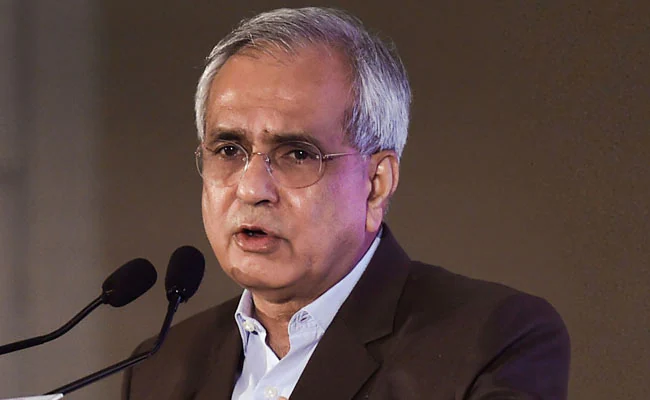
India's economy to grow at 6% in 2023-24: Ex-Niti Aayog VC Rajiv Kumar

India is likely to clock 6 per cent growth rate next fiscal and the country can persevere with a high growth rate because of several reforms undertaken during the last eight years by the Narendra Modi government, former Niti Aayog Vice Chairman Rajiv Kumar said on Sunday (February 19).
Kumar further said major risks going forward will emerge from a synchronized downturn in the North American and European economies.
“India has a good opportunity to persevere with a high growth rate because of the reforms undertaken during the last eight years. We will manage to grow at 6 per cent in 2023-24,” he told PTI.
Also read: India’s strong growth could lead to achievable $25 trillion economy target: Industry leaders
According to Kumar, there are several downside risks, especially in the context of an uncertain global situation.
“These will have to be tackled through careful policy measures designed to support our export efforts and at the same time improve the flow of private investment both from domestic sources as well as from foreign sources,” he said.
The Reserve Bank has projected India’s economic growth at 6.4 per cent for 2023-24, broadly in line with the estimate of the Economic Survey tabled in Parliament.
Also read: Panagariya: India set on high growth, to be 3rd largest economy by 2027-28
Gross Domestic Product (GDP) growth is estimated at 7 per cent in 2022-23, according to the first advance estimate of the National Statistical Office (NSO).
The Economic Survey 2022-23 projected a baseline GDP growth of 6.5 per cent in real terms for the next fiscal.
Replying to a question on high inflation, Kumar said the Reserve Bank has said that it will ensure that inflation rate is brought under control.
“Also a good winter crop will help in keeping the food prices low,” he noted.
The RBI lowered the consumer price inflation (CPI) forecast to 6.5 per cent for the current fiscal from 6.7 per cent.
India’s retail inflation in January was 6.52 per cent.
To a question on India’s rising trade deficit with China, Kumar suggested that New Delhi should re-engage with Beijing on finding greater market opportunities and access in the Chinese market.
“There are several products which India can export more to China.
“That will require a considered re-engagement,” he emphasised.
According to Kumar, it would be feasible for India to restrict imports from China because most imported products are quite essential imports.
Indian and Chinese troops clashed along the Line of Actual Control (LAC) in the Tawang sector of Arunachal Pradesh on December 9, 2022 and the face-off resulted in “minor injuries to a few personnel from both sides.
According to recent data released by the Chinese customs, the trade between India and China touched an all-time high of $135.98 billion in 2022, while New Delhi’s trade deficit with Beijing crossed the $100 billion mark for the first time despite frosty bilateral relations.
Replying to a question on the Adani crisis, Kumar said a robust public-private partnership is essential for developing infrastructure at the rate required.
“I don’t think that one such incident with a private family company will hamper that effort.
“… There are a large number of private sector companies who have participated in infrastructure development in the past and will continue to do so going forward,” he observed.
Adani group has been under severe pressure since the US short-seller Hindenburg Research on January 24, accused it of accounting fraud and stock manipulation, allegations that the conglomerate has denied as “malicious”, “baseless” and a “calculated attack on India”.
While listed companies of the group lost over $125 billion in market value in three weeks, opposition parties inside and outside Parliament attacked the BJP government for the meteoric rise of the ports-to-energy conglomerate. Stocks of most group firms have recovered in the last couple of days.
(With agency inputs)


